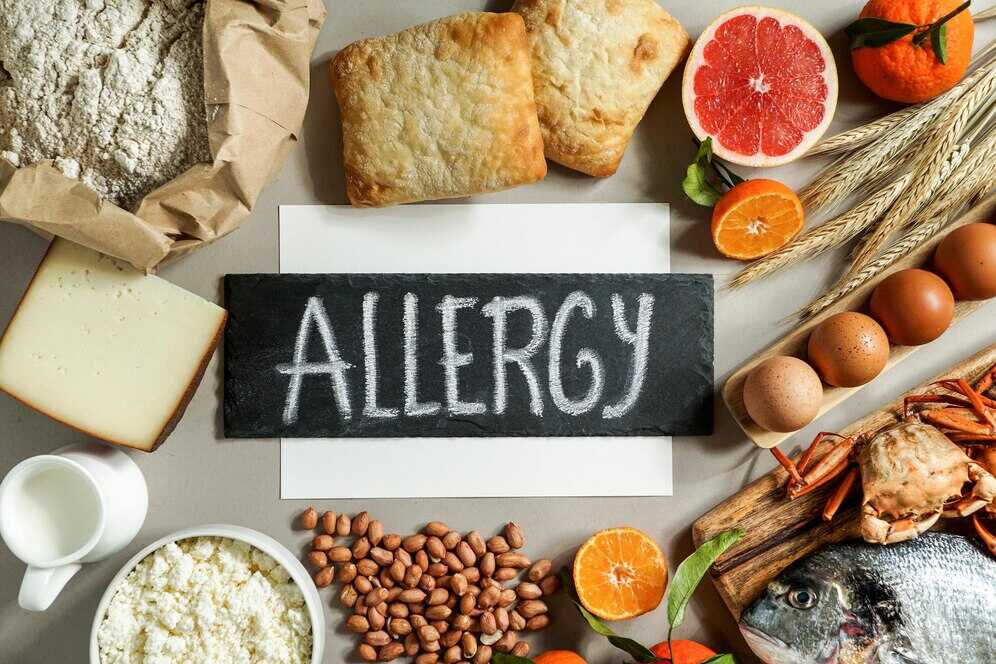How to Recognize and Treat Food Allergies in Children and Adults

Strong 8k brings an ultra-HD IPTV experience to your living room and your pocket.
Food allergies are a common issue that affects both children and adults. When someone has a food allergy, their immune system mistakenly identifies a certain food as harmful. This triggers a reaction that can range from mild symptoms to severe, life-threatening responses. Knowing how to recognize food allergies and understanding the best treatment options is essential for managing the condition. In this blog, we will look at how to identify food allergies and explore the most effective treatments for both children and adults.
What Are Food Allergies?
Food allergies occur when the body’s immune system overreacts to certain proteins found in food. The immune system treats these proteins as harmful invaders and releases chemicals, such as histamine, to protect the body. This can cause a variety of symptoms, ranging from mild to severe. Common food allergens include peanuts, tree nuts, milk, eggs, fish, shellfish, wheat, and soy.
Common Symptoms of Food Allergies
Food allergy symptoms can vary from person to person and can occur quickly after eating the allergenic food. Symptoms can include:
- Skin reactions: Hives, redness, or swelling, particularly around the face, mouth, or eyes.
- Gastrointestinal issues: Stomach pain, vomiting, or diarrhea.
- Respiratory problems: Wheezing, shortness of breath, coughing, or a runny nose.
- Anaphylaxis: This is a severe, life-threatening reaction that can cause the throat to swell, making it difficult to breathe. Anaphylaxis requires immediate medical attention.
If you notice these symptoms after eating a specific food, it may indicate an allergy.
How to Recognize Food Allergies
Recognizing food allergies in children and adults is key to ensuring proper treatment. Here are some steps to help identify food allergies.
1. Observe Reactions After Eating
The most common sign of a food allergy is a reaction after eating the allergenic food. Symptoms can appear within minutes to two hours after consumption. Keep track of any foods eaten and the symptoms that follow. If you notice a pattern, it may be time to consult a doctor.
2. Elimination Diet
An elimination diet involves removing suspected allergens from your diet for a period of time and then gradually reintroducing them. This can help determine which foods trigger an allergic reaction. Always consult with a healthcare professional before starting an elimination diet to ensure it is done safely.
3. Allergy Testing
If you suspect a food allergy, the best way to confirm it is through allergy testing. There are two main types of tests:
- Skin prick test: Small amounts of allergens are placed on your skin, and the skin is pricked to see if there is a reaction.
- Blood test: A blood sample is taken to measure the amount of specific antibodies (IgE) in response to certain foods.
These tests can help identify whether you are allergic to specific foods and guide treatment options.
Treatment for Food Allergies
Once a food allergy is identified, the next step is to manage the condition. Treatment options will depend on the severity of the allergy and whether it is an occasional or chronic problem. Let's explore the most common treatment options for both children and adults.
1. Avoiding Allergens
The most effective treatment for food allergies is to avoid the allergenic food entirely. This means carefully reading food labels and asking about ingredients when dining out. For children, this may require educating teachers, caregivers, and other adults about the child’s food allergy to prevent accidental exposure.
If you or your child has a severe food allergy, it's important to know the common names and hidden sources of allergens. For example, milk can be found in many processed foods under names like “whey” or “casein.” Educating yourself and others is a crucial part of managing food allergies.
2. Antihistamines
Antihistamines are commonly used to treat mild allergic reactions. These medications help block histamine, which is released during an allergic reaction. Antihistamines can relieve symptoms like itching, hives, and a runny nose.
These medications are available in both over-the-counter and prescription forms. While antihistamines can be effective for mild reactions, they should not be used for severe reactions or anaphylaxis. Always consult a doctor before using antihistamines to treat an allergy.
3. Epinephrine (Adrenaline)
For severe food allergies, especially those that can lead to anaphylaxis, the use of epinephrine is crucial. Epinephrine is a medication that quickly reverses the symptoms of a severe allergic reaction, such as throat swelling and difficulty breathing. Epinephrine is typically administered through an auto-injector (EpiPen).
Anyone with a known severe food allergy should carry an epinephrine injector at all times. Parents of children with food allergies should ensure that caregivers and teachers are trained in how to use the device.
4. Immunotherapy (Oral Allergy Therapy)
Oral allergy therapy is a relatively new treatment option for food allergies. This therapy involves gradually exposing the immune system to small, controlled amounts of the allergenic food. Over time, this process can help the body become less sensitive to the food, reducing the severity of allergic reactions.
This treatment is still being studied, and not all food allergies can be treated with immunotherapy. However, for certain allergies, such as those to peanuts or milk, early research shows promising results.
5. Managing Food Allergies in Children
Managing food allergies in children can be challenging, but it is essential for their safety. Here are some tips to help children with food allergies:
- Educate everyone: Make sure teachers, caregivers, and family members know about your child's allergies and how to respond in case of an emergency.
- Prepare safe meals: Always cook meals at home to ensure the food is free from allergens. Pack safe snacks for your child to take to school or social events.
- Teach your child: As your child gets older, teach them to recognize foods that may trigger an allergic reaction and how to communicate their allergies to others.
6. Support for Adults with Food Allergies
Adults with food allergies can lead normal lives, but it’s important to stay vigilant. Some tips for managing food allergies in adults include:
- Always read labels: Always check food labels for allergens. Many food companies now list common allergens, making it easier to identify potential triggers.
- Be cautious when dining out: When eating at restaurants, don’t hesitate to ask about ingredients and food preparation methods. Cross-contamination can be a serious issue in kitchens that handle multiple allergens.
- Have a support system: Connect with other adults who have food allergies. Sharing experiences and tips can help make living with food allergies easier.
Also, Read Our Other Post On the Health Related Topics.
What Makes a Gynecology Clinic the Best Choice for Your Health?
Conclusion
Food allergies can be a serious condition, but with the right knowledge and treatment, they can be managed effectively. Recognizing the symptoms early, getting proper testing, and avoiding allergens are the first steps in preventing an allergic reaction. For severe allergies, always carry epinephrine and seek medical help immediately if a reaction occurs.
If you or your child has a food allergy, it’s important to work with your healthcare provider to create a safe plan. While food allergies can be challenging, with careful planning, individuals can continue to enjoy life without worrying about their next meal.
Note: IndiBlogHub features both user-submitted and editorial content. We do not verify third-party contributions. Read our Disclaimer and Privacy Policyfor details.







